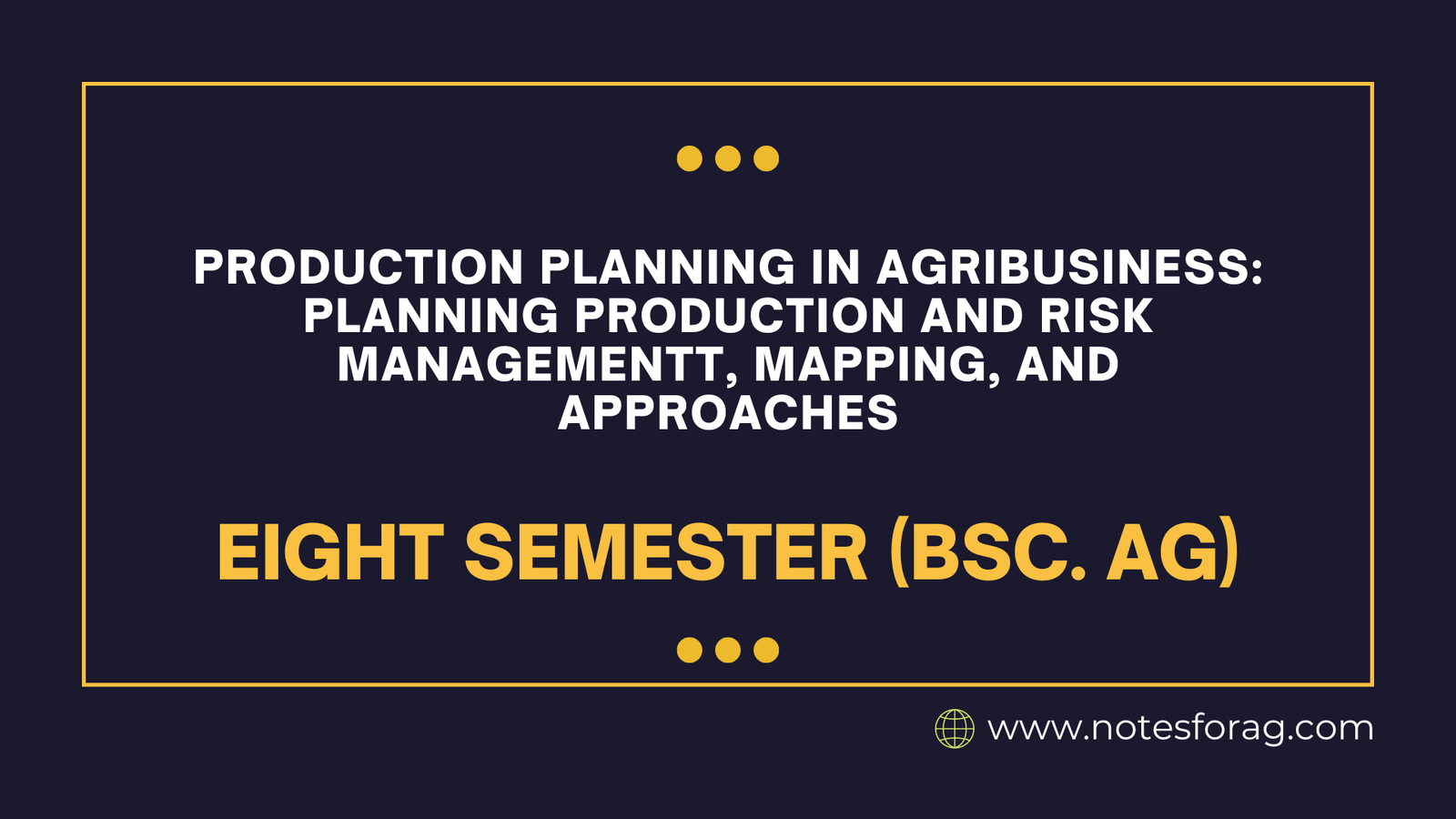Production planning in agribusiness is a crucial process that determines the optimal use of resources to achieve desired production goals. It involves careful decision-making about what, how, and when to produce, ensuring that agricultural operations run smoothly and efficiently. With the unique challenges faced by the agricultural sector, such as unpredictable weather, fluctuating market demands, and resource limitations, effective production planning is essential for maximizing yields and profitability while managing risks.
Table of Contents
1. The Concept of Production Planning
At its core, production planning in agribusiness is the process of organizing and controlling all activities related to crop and livestock production. It ensures that the right amount of products are produced at the right time, using the available resources efficiently. Production planning typically includes scheduling planting, harvesting, labor management, and resource allocation such as water, fertilizers, and seeds.
The primary objectives of production planning are to:
- Maximize productivity while minimizing costs.
- Ensure a steady supply of products to meet market demand.
- Utilize resources efficiently without depleting them.
- Reduce waste by preventing overproduction or spoilage.
Agribusiness involves complex operations that require continuous monitoring and adjustments. Production planning helps streamline these processes by providing a structured approach that aligns with business goals.
2. Steps in Planning Production in Agribusiness
Production planning in agribusiness follows several steps to ensure successful farming operations:
a. Demand Forecasting
The first step here is to forecast demand. Farmers and agribusinesses must forecast market demand for crops or livestock products to avoid overproduction or underproduction. Demand forecasting relies on historical data, market trends, and consumer preferences. Accurate forecasting enables firms to efficiently deploy resources and reduce waste.
b. Resource Assessment
Once the demand is forecasted, the next step is to assess available resources such as land, labor, machinery, water, and capital. Agribusinesses must evaluate the quantity and quality of these resources to determine how much they can produce. This step ensures that production targets are realistic and achievable.
c. Scheduling
Effective scheduling is essential in production planning. Seasons, climate conditions, and market demands all have an impact on when planting, harvesting, and other activities take place in agriculture. A well-structured schedule reduces delays and guarantees that products are ready for market at the appropriate time. For example, harvesting crops at their best quality can boost both productivity and revenue.
d. Labor and Equipment Management
Another key component of is managing labor and equipment. Agribusinesses need to ensure that they have the necessary workforce and machinery to complete production tasks. This involves hiring, training, and assigning roles to workers as well as maintaining equipment for efficient operations.
e. Inventory Management
Inventory control is an integral part of in agribusiness, particularly for businesses dealing with perishable goods. Proper management of storage facilities, cold chains, and transportation ensures that products are stored and delivered in a timely manner, reducing spoilage and waste.
3. Risk Management in Production Planning
Agribusiness is inherently risky due to factors like unpredictable weather patterns, pest outbreaks, and fluctuating commodity prices. To counter these challenges, risk management is an essential component of production planning. Here are some strategies to manage risks effectively:
a. Diversification
One way to mitigate risks is through diversification. By growing a variety of crops or raising different types of livestock, farmers reduce their dependence on a single product. If one crop fails due to weather or disease, others might succeed, ensuring steady income.
b. Insurance
Crop and livestock insurance are critical tools in managing risks. Insurance provides financial protection against losses caused by natural disasters, diseases, or market fluctuations. Integrating insurance into production planning helps agribusinesses safeguard their investments and recover from unforeseen events.
c. Adopting Technology
Modern technologies, such as drones, sensors, and predictive analytics, can play a significant role in production planning by minimizing risks. These tools help monitor crop health, predict weather conditions, and optimize water and fertilizer usage, allowing farmers to make informed decisions and reduce uncertainties.
d. Flexible Scheduling
Another important aspect of risk management in production planning is creating flexible schedules. Agribusinesses need to be prepared for unexpected disruptions, such as sudden weather changes or labor shortages. A flexible production schedule allows farmers to adjust their plans quickly, minimizing the impact of unforeseen events.
e. Market Hedging
Market risks, such as fluctuating prices for crops and livestock, are another factor to consider in production planning. Hedging strategies, like futures contracts, can help agribusinesses lock in prices for their products in advance, reducing the impact of price volatility.
Conclusion
Production planning in agribusiness is a comprehensive process that ensures efficient use of resources, timely production, and successful market delivery. Agribusinesses can optimise their operations by using steps such as demand forecasting, resource assessment, scheduling, and labour management. Risk management is an essential component of production planning, allowing organisations to handle variables such as weather, pests, and market swings. Diversification, insurance, technology usage, and flexible scheduling can help agribusinesses reduce risks and assure long-term, profitable farming operations.
Frequently Asked Questions (FAQs)
What is production planning in agribusiness?
Production planning in agribusiness involves organizing and managing activities like planting, harvesting, and resource allocation to ensure efficient and timely production.
Why is production planning important for agribusiness?
It helps optimize the use of resources, meet market demand, reduce waste, and manage risks like unpredictable weather or market fluctuations.
How can agribusinesses manage risks in production planning?
Risk management strategies include diversification, using insurance, adopting technology, flexible scheduling, and market hedging to mitigate uncertainties.
Related Articles

